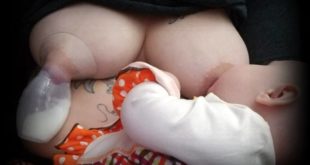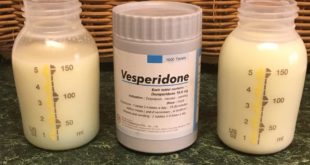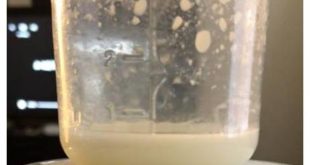Ask Anne…
 Question: We are in the process of adopting a baby girl, and I want to breastfeed. Most articles I read are discouraging, and they say she will not make enough milk. Is is possible to get a full supply of milk? If so, is there something I should be doing now?
Question: We are in the process of adopting a baby girl, and I want to breastfeed. Most articles I read are discouraging, and they say she will not make enough milk. Is is possible to get a full supply of milk? If so, is there something I should be doing now?
Answer: It is possible to breastfeed an adopted baby, much to many people’s surprise. Inducing lactation, which is the process involved in nursing an adopted baby, is more challenging than relactating. Relactating involves rebuilding your milk supply once you have started nursing and then stopped for a period of weeks or months.
Induced lactation is the process of building a milk supply in a mother who has either never nursed a baby, or who has breastfed years before.
You will find that there is a lot of contradictory information out there about inducing lactation. I think that’s because there are no exact answers about a ‘right’ or ‘wrong’ way to do it. Relatively few mothers have tried adoptive nursing (many people are surprised to know it’s even possible) although the numbers are increasing as the many nutritional and emotional benefits of breastfeeding become more well known. What works for one adoptive mother may not work for another, so a lot of the research has been on a trial and error basis.
As far as I know, there are no exact statistics on how many adoptive mothers are able to produce a full milk supply, but based on my own experiences over the years, the numbers are relatively small. It is important to have realistic expectations. An adoptive mother may or may not ever produce a full milk supply. Most women will produce some milk, some produce a full supply relatively quickly, and some never produce milk at all. The majority of adoptive mothers will not produce enough breast milk to adequately nourish their baby without supplements.
The following factors will influence your breastfeeding experience:
- Baby’s age, need to suck, and previous feeding experience. As a general rule, the younger the baby, the greater the need for non-nutritive sucking, and the more willing she will be to take the breast. Older babies, especially those who have gotten used to taking bottles, are less likely to be willing to feed at the breast.
- Your baby’s willingness to suckle. Infants are more likely to use the breast as a pacifier, and ‘laid back’ babies tend to be more patient as they wait for your to build up.
- How frequently and effectively you stimulate your breasts – type of pump used, how often you are able to find time to pump/nurse, etc.)
- Your individual response to stimulation, since each mother’s body chemistry is unique.
- The use of hormones , medications, and herbs like Fenugreek.
- How long you have been nursing or pumping. Some mother’s supplies build slowly, then level off; some keep increasing for many months or years).
Since nursing involves so much more than just transferring milk from breast to baby, many adoptive mothers find that the act of nursing, with the physical and emotional closeness it brings, is just as important as the amount of milk the baby actually receives. Even if you produce only small amounts of breast milk, your baby will get significant benefits from both the milk itself and the security and warmth of nursing at the breast.
For more details about how to induce lactation, including the use of alternative feeding methods, see Relactation and Adoptive Nursing.
Anne Smith, IBCLC
Breastfeeding Basics
 Breastfeeding Basics
Breastfeeding Basics




